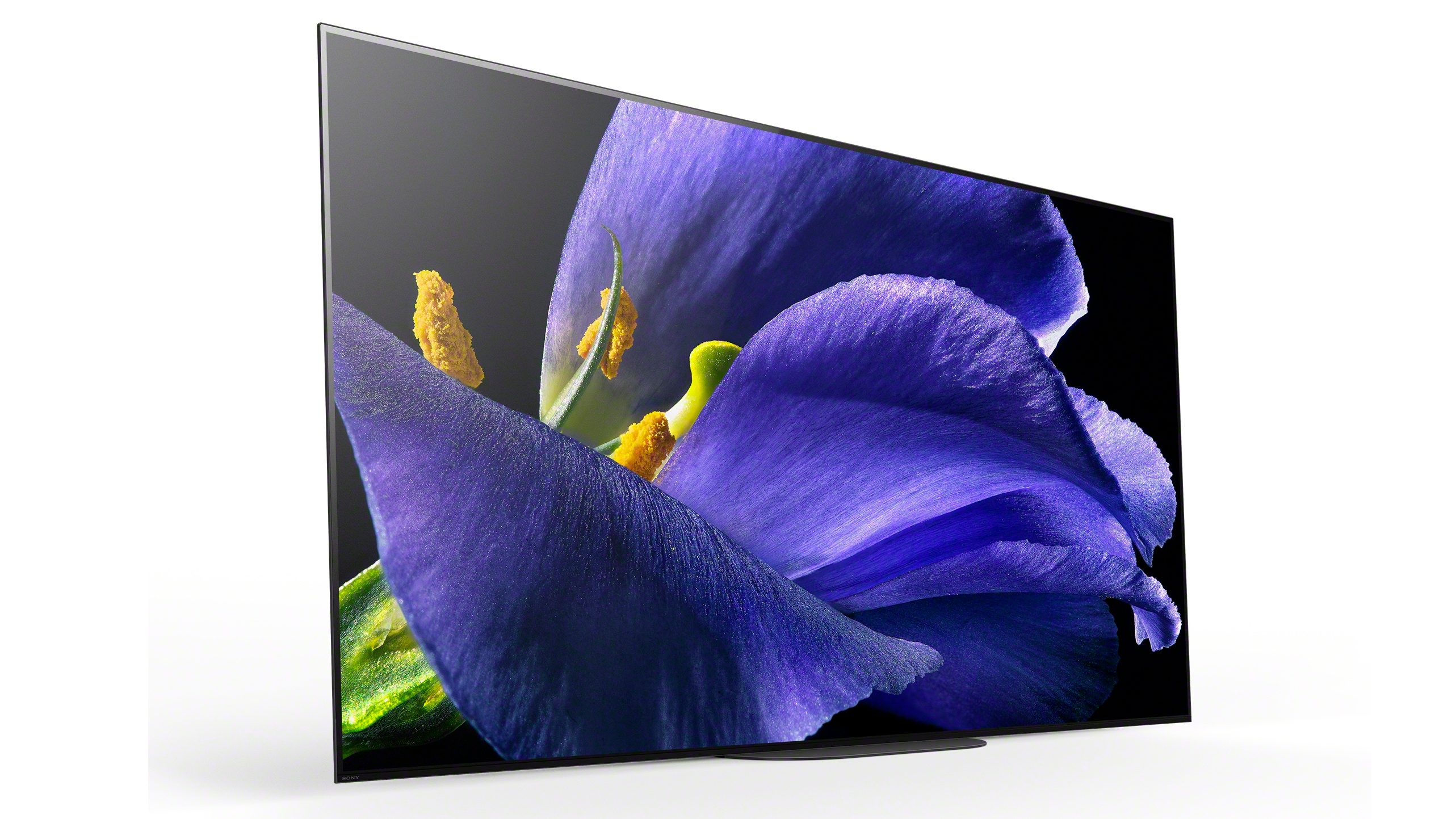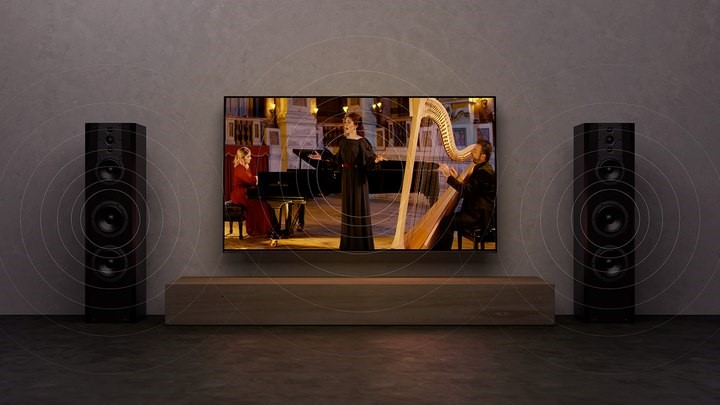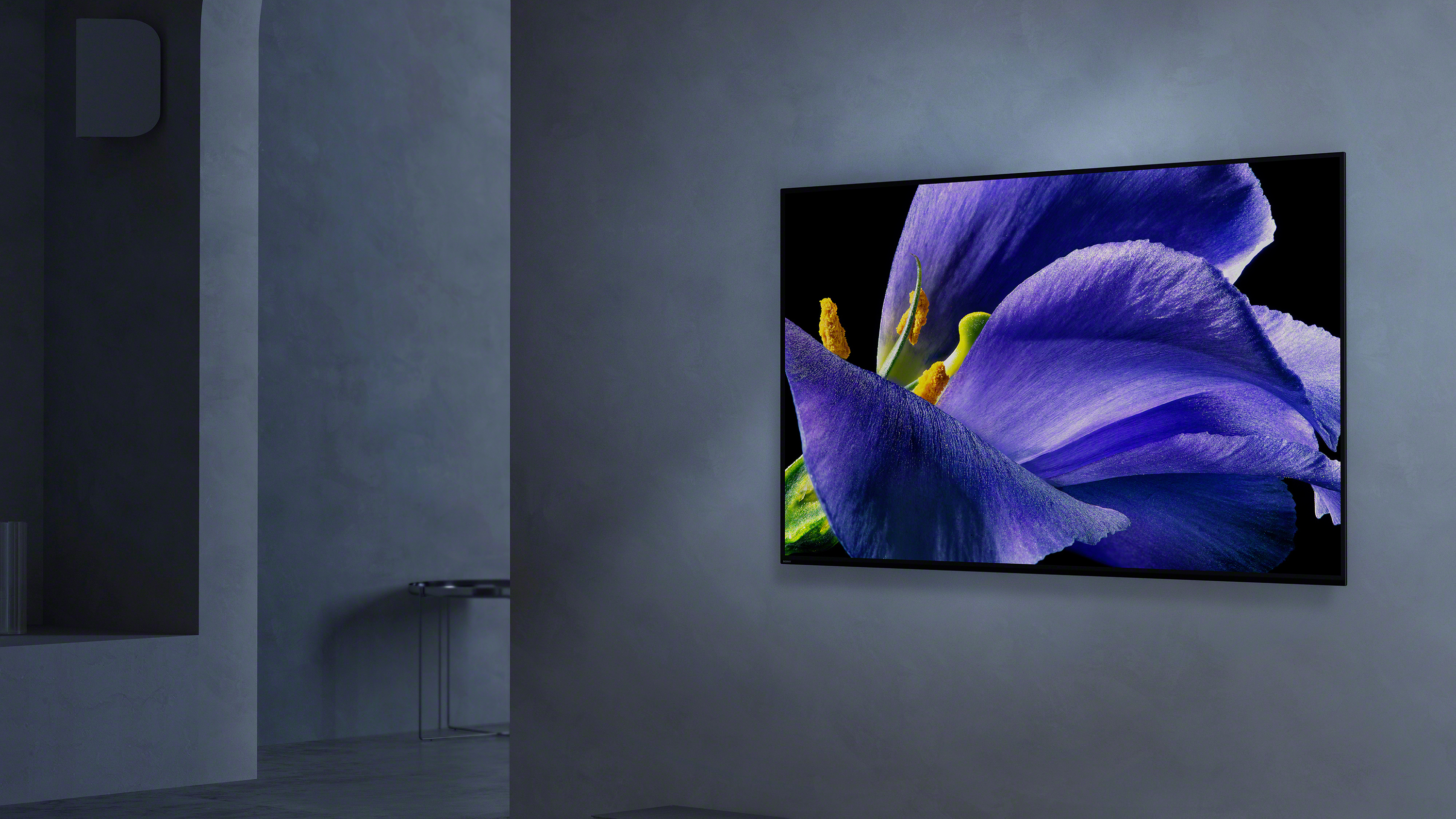TechRadar Verdict
While it doesn't move the needle forward in terms of picture performance, the Sony A9G's updated design and the lesser price are sure to please the folks who didn't quite like the A9F's ‘lean-on’ leg design. For any AV lover, it offers the best in class upscaling and decent gaming performance.
Pros
- +
Updated stand design
- +
Sony X1 Ultimate processor
- +
Acoustic Surface Audio+
Cons
- -
Few upgrades over the predecessor
- -
Expensive
Why you can trust TechRadar
Sony has announced the sequel to the Sony A9F that was launched in India around September last year. The Sony A9G is the company's premium range of TVs under the Master Series. It is known for having some of the most excellent OLED TVs, and the A9G is the latest of all.
While there are not a lot of upgrades in the A9G over its predecessor, it's still potentially a more attractive option than the A9F as it is priced much lower. That's because of the number of changes done on top of an already existing premium setup.
We have been using the TV for a month, and we can certainly say it's one of the best TVs we have ever used. We tried to find out whether it's a significant upgrade over the predecessor, or if it's worth that whopping price, keep on.
Design
The A9G OLED looks vastly different than the A9F in several significant ways. To begin with, the new models stand upright rather than leaning backward like the A9F. It also seems slightly slimmer because it has replaced the 'lean on' leg with a more conventional, A8F like, centrally mounted metal stand.
The wall mount this time is improved as it now looks more flush, minimizing the gap between the wall and the TV. Also, Sony has added the swivel mechanism to pull it out and adjust viewing angles, which is a useful addition.
These little additions may not matter much if you're spending a few thousands on a new TV, but these design choices make a world of difference when it's a gadget that costs more than a couple of lakhs.
The front of the TV seems quite similar to the previous model. It has the same edge-to-edge design with slender borders. The screen looks like a thin slab of glass; in dark scenes, it gets almost impossible to spot the borders apart.
Sign up for breaking news, reviews, opinion, top tech deals, and more.

The TV stays firm on the stand. It's not the first time when Sony has used this kind of table stand, but it's still one of the best stands we've seen on premium TVs. It's easy to attach, good to look at, and most importantly, the panel doesn't wobble and ensures unobstructed viewing. Because the stand is placed at the center and covers only one-third of the bottom, you do not necessarily need a big table to place it.
The A9G's design is an example of Sony's fine craftsmanship. There are no curves, no lighting, visible screws or ports. While the back of the TV is somewhere you won't peep very often, but Sony still adds every bit of finesse to it as well.
The TV components are packed in a 1.3-inch thick box attached at the back of the panel covering around 70% of the area. It has a grainy texture with a grid line pattern cutting into squares. What's smart is that the grid lines hide the joints of the detachable plastic lid that covers ports and wires, giving it a flush look.
Connectivity and remote control
It comes with all the necessary connectivity options placed covertly at the back. It offers four 4K HDMI inputs, all of which will support 2160p up to 60Hz at 4:2:0, 10-bit 4:4:4, and 4:2:2, plus HDCP 2.3. There’s an AV minijack, headphone socket, optical digital audio output, a trio of USBs (one designated for HDD recording) plus Ethernet, Wi-Fi, and Bluetooth. We did not experience any connectivity issues using any of these options, which adds up even more to the seamless usability.
The TV comes with a single remote control. It’s a rather nice wand which has a smart aluminum face, dedicated buttons for Netflix and Google Play, and an integrated microphone.
Performance
Unlike the design, the features and picture quality remains almost the same as the A9F. The A9G uses the same core OLED panel as its predecessor, as well as, more importantly, the same powerful X1 Ultimate processor. In our experience, this is one of the most powerful processors that we've seen on any smart TV. It is also a significant update over the X1 Extreme. The X1 Ultimate processor improves image quality with "object-based HDR remaster" and "object-based super resolution," up-converting SDR material and enhancing sharpness, respectively.
These two pieces of tech help to offer improved colour performance, better upscaling of sub-4K sources, better near-black light management, anti-colour banding processing, and many more features besides, all designed with the intention of creating a picture that gets as close as Sony can manage to the performance of its own BVM-X300 professional OLED mastering monitor.
There is a Netflix Calibrated Mode which optimizes 'Netflix Originals' content. Enabling it from the settings gives a more accurate image to what was initially mastered by content creators. Unfortunately, we could not experience this because of a bad internet connection. But we're looking forward to seeing how it changes things when it comes to Netflix Originals.
The TV lacks support for HDMI 2.1, whereas its competitor, the recently announced LG C9 OLED doesn't.
HD/SDR
The A9G doesn't ask for copious image tuning to get the best out of this TV: The HD/SDR content looks remarkable from the moment you turn it on for the first time.
That said, HD/SDR images look crisp and colour-rich with oodles of contrast. You can actually see how well the picture processor and the panel work in sync.
The set’s gaming performance is impressive. This is one area that has been improved significantly to match up to its rivals. Using the dedicated Game mode, we recorded an input lag of 26.5ms, fast enough for a decent FPS TV gaming experience.
Sony continues to do an exceptional job with regular HD/SDR content. Object-based remastering ensures even daytime TV benefits from the full potential of this OLED panel.

4K/HDR
Sony's image processing engine tailors each implementation to match the characteristics of any partnered panel. It's a huge plus when it comes to dynamic tone mapping for HDR and the reason why HDR handling looks so seamless. We noticed no clouding, banding issue even in the darkest sequences.
The company has put a lot of tech inside, and what's right is that most of it actually helps to have a visually better viewing experience. The 4K X-Reality Pro image enhancement offers extra subjective detail and depth to images. It generally works well, highlighting subtle definition in shadowed areas and textures, although that might boost grains too. But we mostly preferred having it turned on.
Similarly, the Motionflow XR processor does sports and fast-moving action a treat to watch. However, it can result in unwanted image artifacts with film content. So you might want to turn it off during movies.
What we absolutely loved about the A9G is that it retains gorgeous black levels, and the highlights stand out beautifully. Detail levels are high, and it retains shape when there's motion in the scene at high frame rates.
It brings precision to light and color control. As usual with the OLED TVs, the viewing angles are also outstanding.

Sound
The A9G retains the impressive picture quality of the A9F, but Sony has made some changes to its Acoustic Surface Audio+ speaker configuration. While the latter had a 3.2 channel audio speaker including a central actuator and two side-facing subwoofers, the A9G comes with a 2.2 channel audio.
We think it's because Sony had to drop the 'lean-on' leg and make the screen slimmer on the A9G. Also, the company has redesigned its bass drivers for the A9G, to try and deliver the same sort of dynamic range despite having less physical bodywork to play with.
Clips of 'Bahubali 2' revealed that the sound effects seem to be appearing from the exact part of the picture they should be coming from, rather than from some dislocated speaker below the screen.
At full volume, it is loud enough to fill up a big hall without losing the crispness. But if you are a picky one, the soundstage isn't as wide as you'd get on an external soundbar. For us, it did most of the job, in fact, we sometimes used the TV just to play songs without needing an extra speaker.
Final verdict
If you're looking at the A9G as a significant upgrade over the A9F, then it's not because the OLED panel and the picture quality - two vital elements of a TV - are mostly the same. But we don't mean that it's terrible.
The A9F is an excellent TV in itself, and the same is the case with the A9G. It looks premium and has a spec on the right side of the righteous. The Android platform is smooth and easy to live with, has no content restrictions, and offers top picture quality with decent sound. The design changes like the new wall bracket and a slimmer design do add more meaning to the money you spend on it.
But it's a lot of money.
At Rs 2,69,900 for the 55-inch model, it's expensive, but we can't call it overpriced unless there's something similar or better available at a lesser price. It's launched at a lower price than the A9F, and for pixel-aficionados, this is going to be a big deal.

Sudhanshu Singh have been working in tech journalism as a reporter, writer, editor, and reviewer for over 5 years. He has reviewed hundreds of products ranging across categories and have also written opinions, guides, feature articles, news, and analysis. Ditching the norm of armchair journalism in tech media, Sudhanshu dug deep into how emerging products and services affect actual users, and what marks they leave on our cultural landscape.
His areas of expertise along with writing and editing include content strategy, daily operations, product and team management.
